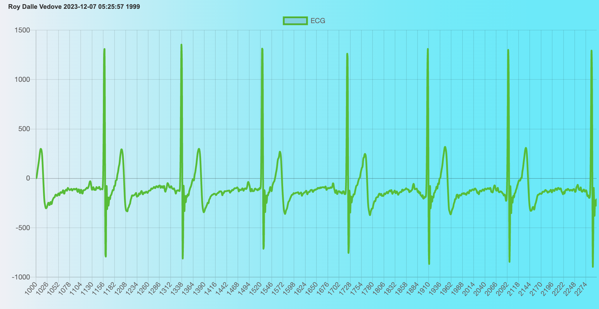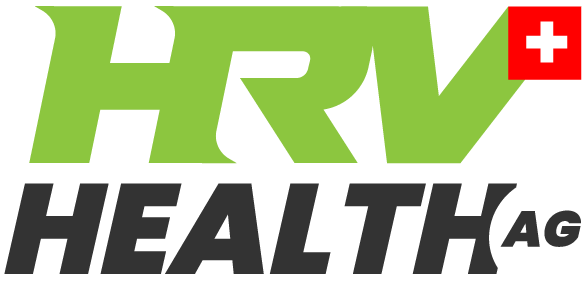Heart rate variability is a science. To get the most out of the HRV Health Platform requires a scientific approach.
Firstly, as a new user you need to establish a base line to see what your HRV metrics are for your current state of health. This requires taking readings at the same time each day, at your resting pulse rate. For most people, that will be first thing in the morning. Sitting, or lying down, you must remain completely stationary, in a meditative state, while taking the reading. After a week or so of taking daily readings, you will have established the base line.
The figures you will focus on initially are the RMSSD, Score, Overall health, Stress, Resting heart rate, and the Ratio.
Let’s say you are a 50 year old male, with an RMSSD that fluctuates between 20 and 40, Score between 51 and 63, Overall health between 50 and 100, Stress between 4 and 16, Resting heart rate between 64 and 71, and a Ratio between 4 and 16.
An overall health of 50 is low. That will be associated with a low RMSSD and score and a low ratio. This is usually the result of illness or too much alcohol, and not enough sleep.
The resting heart rate of 64 indicates an above average level of fitness for a 50 year old male.
Once you’ve found your baseline, you can start the science of testing how much lifestyle changes make to your state of health. Usually it’s best to experiment with one thing at a time, and then to start with the change that will produce changes quickly.
Let’s say that you have Stress consistently in excess of 10. Breathing techniques, an easy weekend, and getting good sleep will all help towards an improving the Stress numbers. In the longer terms, exercise and diet result in the big improvements, provided you keep it up.
You will find that with the improved (lower) Stress numbers, RMSSD will improve too.
Seeing that the experiment is working requires taking the readings on a daily basis, as you were doing while establishing the base levels.
Once you start to see an improvement, you can start working on lifestyle changes that will produce the long term health improvement. These included reducing alcohol intake, exercise, good sleep and a healthy diet.
If you’re someone who drinks regularly and want to see the impact of alcohol, give up drinking for a few days. The results will give you a profound understanding of the impact that alcohol has on your health.
Exercise is more complicated. Initially your body will respond negatively to the stress of exercise, if this is a big change for you. Dramatic drops in the RMSSD are an indication that you are pushing too hard. Use the recovery advice for guidance.
Much depends on the type of exercise that you do. Endurance exercises like cycling and running produce the highest RMSSD figures, but this is not necessarily best. Intense long distance efforts place extreme stress on the heart, and this results in low ratio figures, and in some cases unusual ECG patterns.
 ECG during a period of intense training
ECG during a period of intense training
RMSSD numbers with extreme day to day fluctuations can be an indicator of heart stress, and under these circumstances, you are advised to take an ECG reading using the HRV Health app. If the pattern looks abnormal, cut back on very intense levels of exercise for a while to see whether this results in any improvement. The impact of extended stress from intense levels of exercise on ECG over an extended period of time can take a few weeks to get back to normal.
 ECG after a period of recovery
ECG after a period of recovery
Cross training, body building, walking and yoga produce an excellent balance between with improvements in both the ratio and RMSSD figures, and this normally results in the best overall health figures.
The key to obtaining good results is doing one experiment at a time, and monitoring the results on a daily basis.
Users who fall ill often stop taking readings while they are sick. That’s understandable. When you’re not feeling well, getting out of bed to take a reading is not forefront on your priorities. Try and take the reading in bed. The HRV numbers will tell you how sick you are, despite how the medication you are taking makes you feel. The numbers will also tell you how well you are recovering. This is especially true if you are taking antibiotics. The symptoms may disappear with the help of the medication, but you’re HRV figures will warn you that you are still in recovery, and that you still need to take it easy.
There are times you may be ill, and not have any symptoms as happened to 40.2% of the people who were infected with COVID. The numbers will wane you that you’re under the weather, and again, that you need to take care of yourself, especially getting enough rest.
As you become familiar with your HRV Health metrics you will become better equipped to address your health proactively.
Another big feature is the ability to detect chronic conditions early. As everyone knows, the early detection of the onset of cancers and diabetes can lead to much more positive results with treatment. The HRV numbers won’t tell you what the condition is, but an unexplained long term decline, particularly in the Ratio is a warning that a check-up is called for.
It could save your life, as some of our users have already proved.
If you’re in doubt, and need guidance, please contact us. We’re happy to help.
